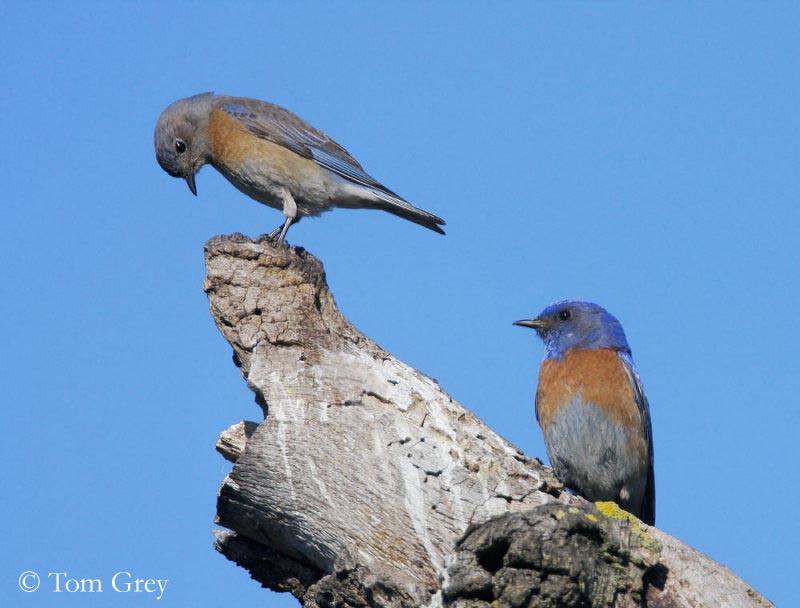
Western Bluebird
Sialia mexicana
Passeriforme Order – Turdidae Family
BIOMETRICS:
Length: 16-19 cm; Weight: 24-31 g
LONGEVITY: up to 4 years
DESCRIPTION:
Western Bluebird male has deep blue upperparts, head and throat. Breast, breast sides, and flanks are chestnut. It has greyish belly and undertail coverts. We can see dark chestnut croissant on shoulders and upper back.
Eyes are dark brown. Bill, legs and feet are black.
Western Bluebird female is duller than male, with brownish-grey upperparts. Breast and flanks are tinged with dull chestnut. Head and throat are pale grey. She has greyish belly and undertail coverts. Wings and tail are blue above.

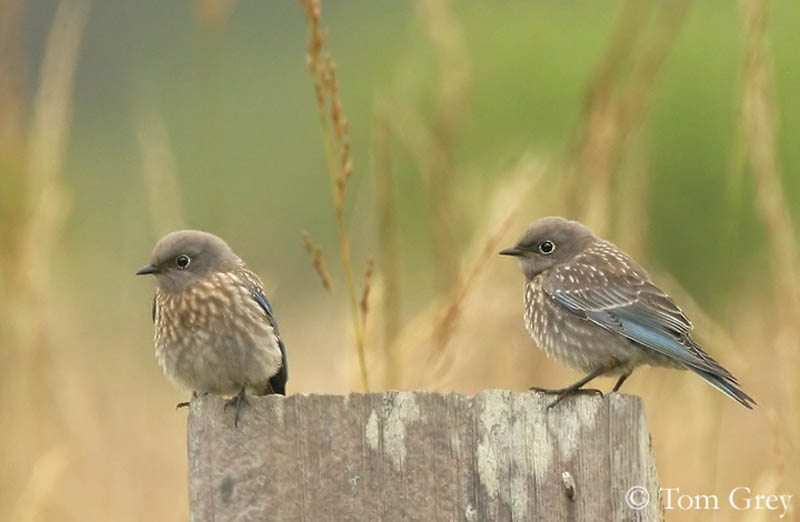
Juvenile has spotted breast and back, with blue on wings and tail. It is duller than adults.
VOICE: SOUNDS BY XENO-CANTO
Western Bluebird’s call is a mellow “few”, extended in brief song “few few fawee”. It also utters a chatter, to establish its territory.
The “kew” or “few” call, and “che-check” calls are used for location between mates, overall in breeding season.
To defend territory against an intruder, male utters a kind of “squawk”.
HABITAT:
Western Bluebird lives in open conifer forests, farmlands, forest edges, streamside groves with scattered trees and grassy areas to forage. We can find it at elevations up to 2900 metres.
RANGE:
Western Bluebird lives in Western North America, southwards to northern Baja California and Central Mexico.
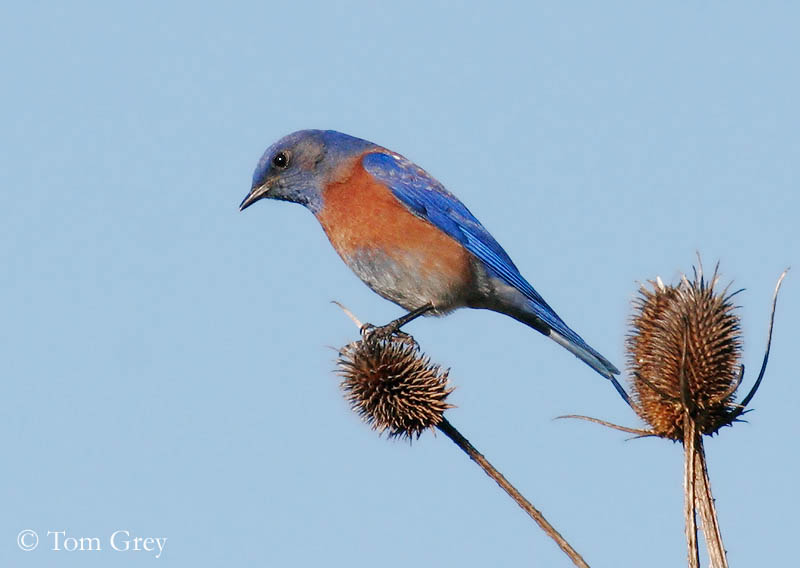
BEHAVIOUR:
Western Bluebird lives in small groups in winter, numbers depend of food resources. These groups provide protection from predators.
Males often find a mate in a group, or a pair which help at nest. This species has helpers at nest, as older offspring, or birds without mate (dead), or a free pair after nest failure. These helpers take care of nestlings, and reduce extra pair copulations. When the defending male is away from the nest, they guard nest and female, and keep out male intruders. Their rusty breasts are used to signal aggression towards other males.
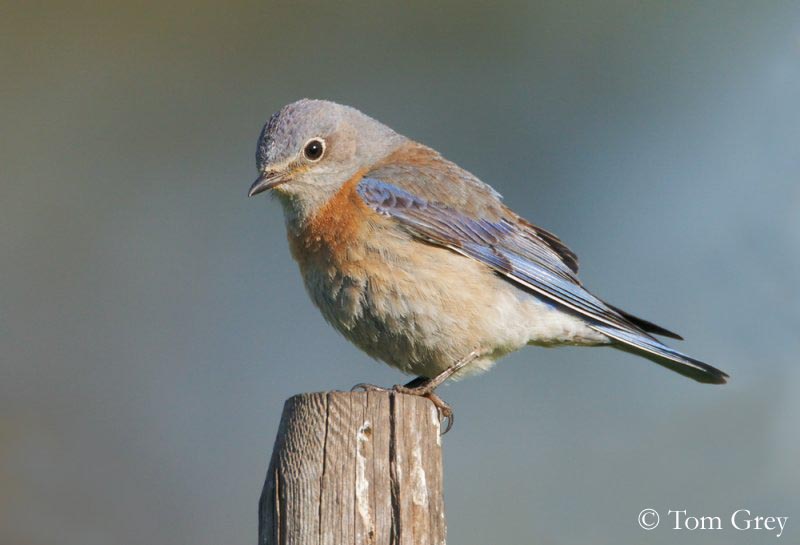
Female may use display signals to deter extra pair copulations. Sometimes, she leaves her perch site, to attack the invading male on the breast, and they may flatten themselves against a trunk.
Invading male will flap the wings quickly and will utter a high-pitched call.
Western Bluebird defends strongly nest and chicks, attacking predators with the bill, grasping the predator leg and causing it to fall.
Western Bluebird is monogamous. During courtship display, male sings and flutters in front of female, with half open wings and fanned tail. It may preen female and offer her food. Its territory is used for mating, nesting and feeding.
To feed, Western Bluebird hunts from perches, diving down to catch preys. Sometimes, it may fly out to catch aerial prey, and probe insects from leaves. Large preys are beaten against branch or ground, before to eat them.
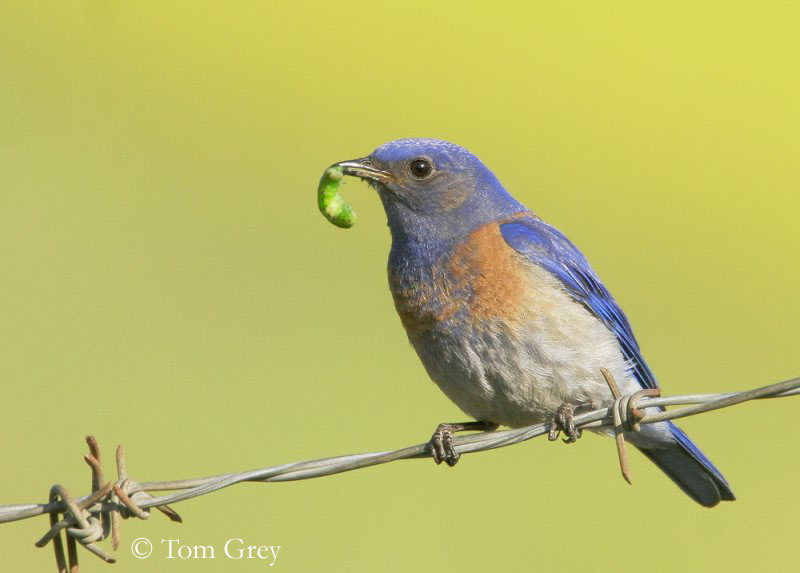
Western Bluebird is partially migratory. Birds living at high elevation, winter in lower lands. Others move to find more food resources. They winter in open scrubby forests, in foothills and canyons.
FLIGHT:
Western Bluebird is a short distance migrant. It may flit to feed, and catch a prey in flight.
REPRODUCTION:
Western Bluebird’s nest is situated in natural cavities, in woodpecker holes, in dead trees or in nest boxes.
Female builds the nest, sometimes helped by the male. Nest is a loose cup made with twigs and weeds, and lined with finer plant materials. Height varies from 2 to 5 metres above the ground.
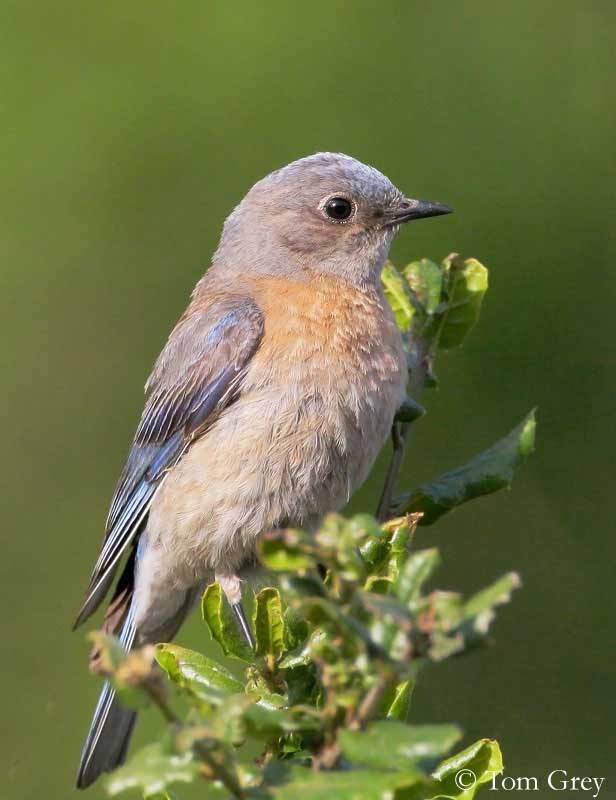
Female lays 4 to 6 pale blue eggs. Incubation lasts about 12 to 18 days by female, fed by the male. Chicks hatch altricial, and female broods them, always fed by the male. Sometimes the male remains near the nest while female is searching for food, but it doesn’t brood the chicks. Both parents feed the young which fledge at about 2 to 3 weeks.
Young reach their sexual maturity at one year.
This species produces one or two clutches per season.
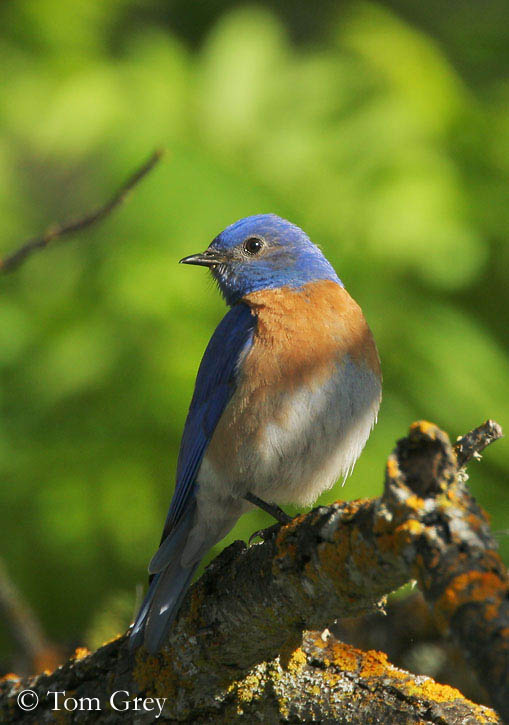
DIET:
Western Bluebird feeds primarily on insects (up to 80% of their diet), but during winter, it also eats berries and fruit. It also consumes spiders, snails and earthworms.
PROTECTION / THREATS / STATUS:
Western Bluebird has declined, due to competition for nesting cavities, with House Sparrows and European Starlings. Regional climatic changes have reduced numbers of preys, and habitat loss is an important threat.
An intense nest-box program helps populations of Western Bluebirds to rebound.
They have predators such as small mammals (squirrels) which attack chicks in the nest.
Fr: Merlebleu de l’Ouest
All : Blankehl-Hüttensänger
Esp : Azulillo de Garganta Azul
Ital: Uccello azzurro occidentale
Nd: Westelijke Buebird
Sd: Västsialia
Photos de Tom Grey
Son site:
Tom Grey's Bird Pictures
Texte de Nicole Bouglouan
Sources:
HANDBOOK OF THE BIRDS OF THE WORLD Vol 10 by Josep del Hoyo-Andrew Elliott-David Christie - Lynx Edicions - ISBN: 8487334725
FIELD GUIDE TO THE BIRDS OF NORTH AMERICA - National Geographic Society - ISBN: 0792274512
All About Birds (Cornell Lab of Ornithology)
Animal Diversity Web (University of Michigan Museum of Zoology)
What Bird-The ultimate Bird Guide (Mitchell Waite)
Wikipedia (Wikipedia, The Free Encyclopedia)
Bird Web (Seattle Audubon Society)